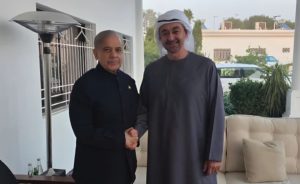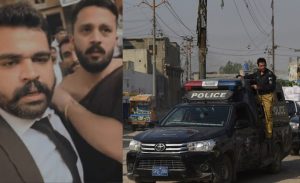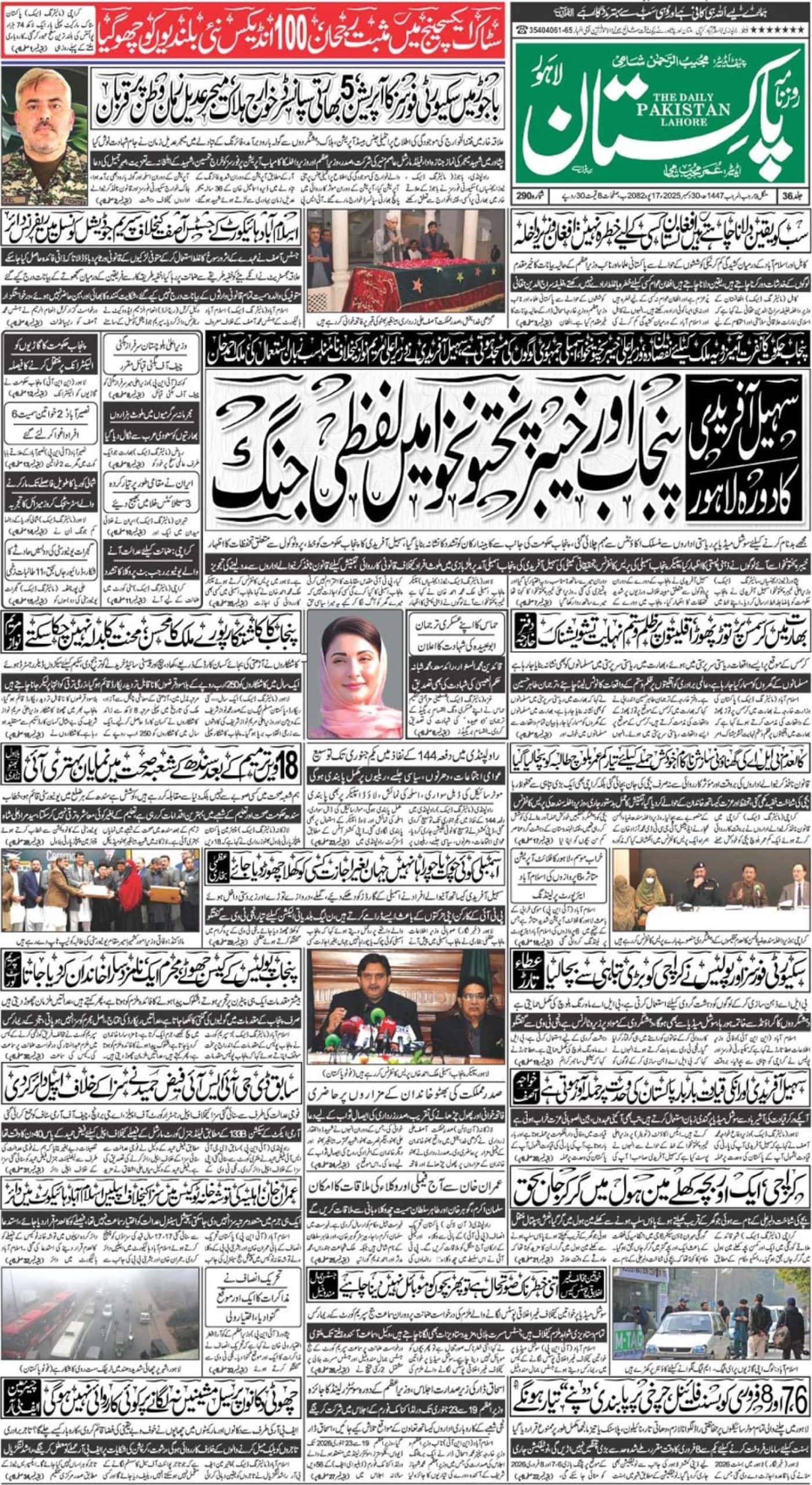ISLAMABAD – Inter-Services Intelligence, the country’s premier spy agency has divulged sensational details regarding the Faizabad sit-in that had paralyzed the capital city for 22 days with a special focus on the personality profile of religious leaders, spearheading the protest.
In its 46-page report submitted before the supreme court of Pakistan, ISI has stated that Khadim Hussain Rizvi – the wheelchair-bound leader of Tehreek-i-Labbaik Ya Rasool Allah (TLYRA) – is ‘reportedly financially corrupt’ and had gathered funds to the tune of Rs 10 million even before the start of the protest.
The report, however, states that Rizvi – who spearheaded the protest in November last year over the amendment in Election Act 2017 – appears to be living within his means noting that he has shown an inclination towards misuse of power, the authorities, and resources.
Rizvi, who shot to fame with his blunt abuse-laden speeches as he called on the government to revoke the clause regarding Khatam e Nabuuwat, is also listed as being ‘arrogant’ with his superiors, ‘harsh’ with his subordinates, and ‘committed’ to his cause, however, his overall reputation is ‘unsatisfactory’, as per the findings of ISI.
It has also been claimed by the agency that Rizvi had encouraged his followers to either accompany the march or contribute Rs300 per person.
https://en.dailypakistan.com.pk/headline/islamabad-sit-in-to-be-called-off-after-zahid-hamids-resignation/
Apart from Rizvi, the spy agency has also analyzed the complete profiles of the leadership of the protesters including Dr. Muhammad Ashraf Asif Jalali, and Pir Muhammad Afzal Qadri.
Regarding Dr. Jalali, the report describes him as being dubious, an opportunist, and a manipulator with an overall general reputation ‘unsatisfactory’, Express Tribune reported.
‘Jalali violated an agreement with the Punjab government for not holding a public meeting at Nasir Bagh Lahore in connection with the Mumtaz Qadri Rehai movement. He is actively involved in sectarian activities,’ states the report, apparently tattering apart the reputation of a Lahore-based religious scholar.
Interestingly, no negative point has been found in the profile of Muhammad Afzal Qadri despite his controversial speeches, available on social media.
Nurturing Faizabad sit-in
The spy agency has highlighted that food to the demonstrators was provided by the owner of the TV station Channel 92, Mian Abdul Rasheed, a prominent businessman hailing from Faisalabad.
The report says that generous donations by people from across society, especially the Barelvi sect, helped sustain the protest with a large number of registered madaris affiliated with the group raising large sums in donations.
‘TLYR sustained the dharna for 20 days due to generous public support. [There were] rumors of organized logistic support to TLYR activists occupying Faizabad interchange in terms of food,’ says the report.
https://en.dailypakistan.com.pk/pakistan/what-makes-pakistans-election-bill-2017-controversial/
Moreover, the report claims that many affluents from across the globe also contributed financially while Awami Muslim League chief Sheikh Rasheed Ahmad, PML-Z chief Ejazul Haq, PTI Ulema Wing Islamabad, and PPP leader Sheikh Hameed also threw weight behind the protesters.
Furthermore, former bureaucrat and political commentator Orya Maqbool Jan’s name has also been included in the list of supporters.
The report has also identified six lawyers and three trade union leaders as supporting the dharna, without specifically mentioning as to how the said individuals supported the dharna.
It also reports on a meeting between a British Muslim delegation and diplomats, a Spanish Muslim delegation meeting dharna participants, and other attendees.
ISI’s Recommendations Shrugged Off
The comprehensive report states that the ISI had recommended the federal government to avoid the use of force and resolve the issue peacefully through negations with Tehreek-e-Labbaik (TLYR).
“Despite ISI’s recommendations to solve the issue politically and avoid the use of force, an operation against the dharna was launched on November 25, 2017, on the orders of the Islamabad High Court. The operation was an utter failure [and] triggered countrywide protests,” says the report, apparently giving a devasting blow to the already embattled Pakistan Muslim League Nawaz regime.
‘The federal government did not independently contact TLYR leaders for negations when the dharna got prolonged and inaction was observed, however, representatives of ISI engaged both sides and asked them to sit together to resolve the issue,’ says the report.
The ISI has also expressed dissatisfaction over the performance of other agencies blaming that the special branch of police covered the dharna but restricted themselves to providing tactical information, strength, participation and other logistic aspects.
‘Intelligence Bureau (IB) remained aloof, as no information or efforts were visible on the part of this agency,’ observed the spy agency about the civilian agency administered by the interior minister.
PM Office Meeting
ISI has also furnished details about a high-level meeting at the PM office on November 22 saying it had been decided unanimously to resolve the issue peacefully and ISI was given a lead role with complete authority to negotiate.
‘During the meeting, the DG ISI said that even though the sit-in at Faizabad was numerically small, the TLYR had pockets of dedicated and committed followers all over the country and peaceful negotiations were the only way forward,’ according to the minutes of the meeting attached with the report.
According to the minutes, Punjab Law Minister Rana Sanuallah informed the meeting that the Punjab government had followed a policy of restraint to avoid creating a law and order situation and that by November 22, negotiations were the only solution to the problem.
The report also reveals that the Punjab government did not make any attempt to obstruct or negotiate with protesters to stop them from reaching the federal capital last November.
Numbers Game
The total number of Faizabad demonstrators has been gauged between 1,500 and 1,800 with locals occasionally joining them, especially on Friday, as per ISI.
Why Did Faizabad Operation Fail?
The ISI report on the failure of Faizabad operation, launched on the orders of Islamabad High Court, highlights that the operation botched due to lack of coordination between police forces of the twin cities and the inability of the Rawalpindi police to block reinforcements.
‘Live media coverage of the operation on TV as well as social media resulted in mobilization not only in Rawalpindi and Islamabad but across the country as well,’ says the report and adds that religious sentiments of police personnel were exploited by TLYR leadership through their continuous speeches on loudspeakers.
Provision Of Electricity
The top spy agency has outlined in its report that a diesel generator was installed on the main container, while the rest of the power supply was managed using illegal connections to CDA power poles with a CDA standby generator in operation as well.
‘The generator on the main container was provided by Wali Sons, Lahore. Reportedly, the daily cost of running the generator was Rs80,000,’ says the report.
TLYR’s Political Status
Giving specific answers to questions raised by the top court in its January 3 order, the ISI has replied that TLYR was a registered political party and had taken part in the recent by-elections where it secured a considerable number of votes.
‘TLYR is neither a banned organization nor on the watch list, hence it was not placed under surveillance earlier. The organization, like others, is however monitored for any extremist tendencies,’ continued the report.
The ISI has admitted that it monitors extremist groups and persons and those who jeopardize the functioning of the state.
Regarding the monitoring of social media, the report says that as per Pakistan Electronic Crimes Act (PECA), the Federal Investigation Agency (FIA) is authorized to monitor internet and social media activity.
Some negative activities are, however, monitored by the ISI in the context of national security and necessary details are shared with FIA as and when required, added the report.
Let it be known that a two-member bench of the apex court, comprising Justice Mushir Alam and Justice Qazi Faez Isa, is resuming the hearing of a suo motu case regarding Faizabad sit-in today (Monday). Deputy Attorney General Sohail Mahmood will appear on behalf of the federal government.













